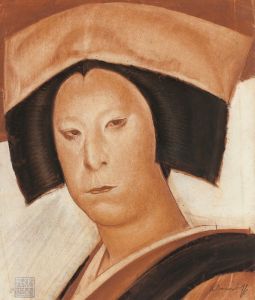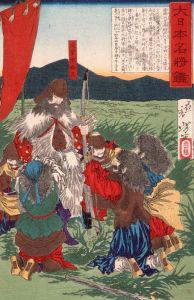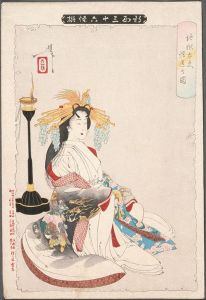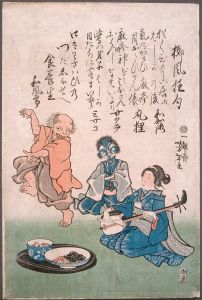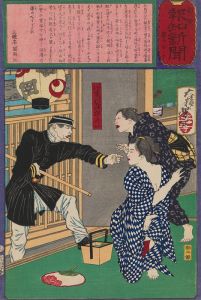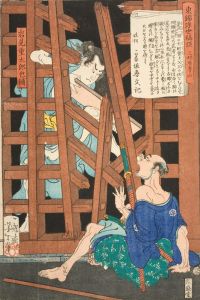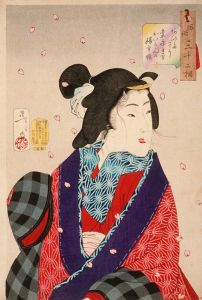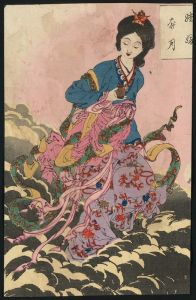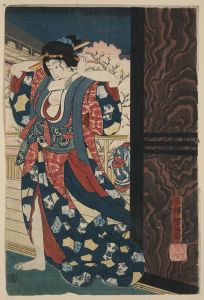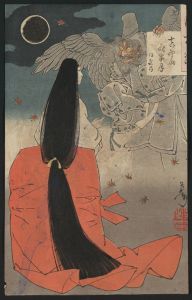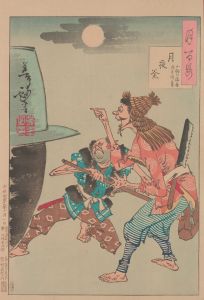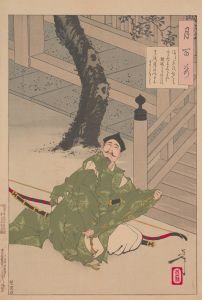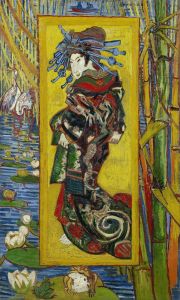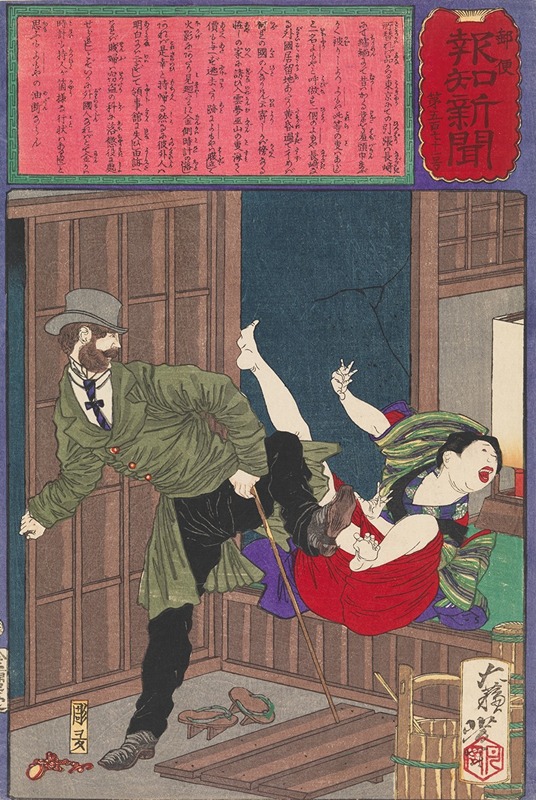
A Wicked Foreigner Refuses to Pay a Young Prostitute
A hand-painted replica of Tsukioka Yoshitoshi’s masterpiece A Wicked Foreigner Refuses to Pay a Young Prostitute, meticulously crafted by professional artists to capture the true essence of the original. Each piece is created with museum-quality canvas and rare mineral pigments, carefully painted by experienced artists with delicate brushstrokes and rich, layered colors to perfectly recreate the texture of the original artwork. Unlike machine-printed reproductions, this hand-painted version brings the painting to life, infused with the artist’s emotions and skill in every stroke. Whether for personal collection or home decoration, it instantly elevates the artistic atmosphere of any space.
Tsukioka Yoshitoshi (1839–1892) was a renowned Japanese artist known for his woodblock prints and paintings, particularly during the late Edo and early Meiji periods. He is often celebrated for his innovative approach to traditional ukiyo-e art, which depicted subjects ranging from historical scenes to supernatural themes. One of his notable works is "A Wicked Foreigner Refuses to Pay a Young Prostitute," which is part of his series "Eimei Nijūhasshūku" (英名二十八衆句), also known as "28 Famous Murders with Verse."
This series, created between 1866 and 1867, is a collection of prints that illustrate notorious murders and acts of violence, each accompanied by a verse. The series reflects the public's fascination with crime and the macabre during the period, a theme that was not uncommon in ukiyo-e art. Yoshitoshi's work in this series is noted for its dramatic intensity and vivid portrayal of emotions, often capturing the moment of violence or its immediate aftermath.
"A Wicked Foreigner Refuses to Pay a Young Prostitute" depicts a dramatic scene involving a foreigner and a young Japanese woman. The print captures the tension and conflict between the two figures, with the foreigner shown in a confrontational stance. This work is significant as it reflects the societal tensions and cultural exchanges occurring in Japan during the late 19th century, a time when the country was opening up to Western influences after a long period of isolation.
Yoshitoshi's depiction of a foreigner in this print is particularly noteworthy, as it highlights the presence and perception of Westerners in Japan during the Meiji Restoration. This period was marked by rapid modernization and Westernization, leading to both fascination and apprehension among the Japanese populace. The portrayal of the foreigner in a negative light may reflect contemporary anxieties about these changes and the impact of foreign presence on traditional Japanese society.
The artistic style of Yoshitoshi in this print, as in others from the series, is characterized by bold lines, dynamic composition, and a keen attention to detail. His ability to convey emotion and narrative through visual elements is evident, making his work both compelling and thought-provoking. The use of color and shading adds depth to the scene, enhancing the dramatic effect and drawing the viewer into the moment depicted.
Yoshitoshi's "Eimei Nijūhasshūku" series, including "A Wicked Foreigner Refuses to Pay a Young Prostitute," is considered an important contribution to the ukiyo-e genre, showcasing his mastery of the medium and his innovative approach to storytelling through art. His work continues to be studied and appreciated for its artistic merit and historical significance, offering insights into the cultural and social dynamics of 19th-century Japan.





